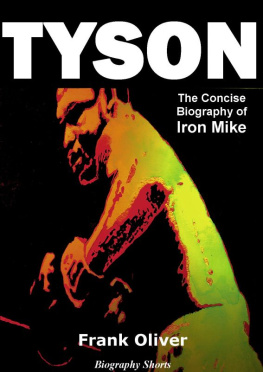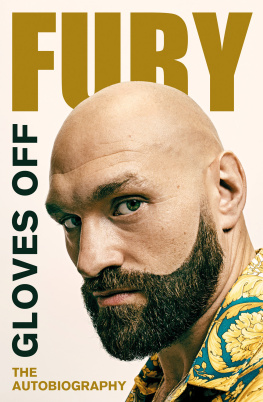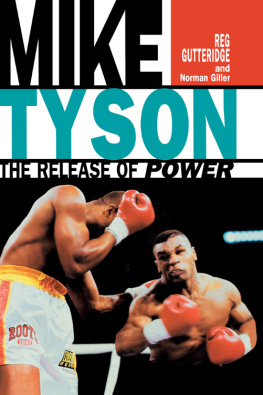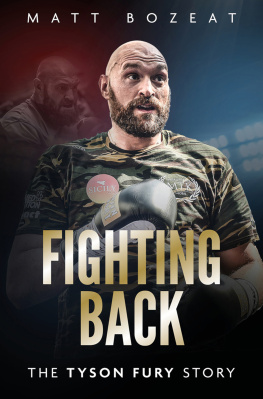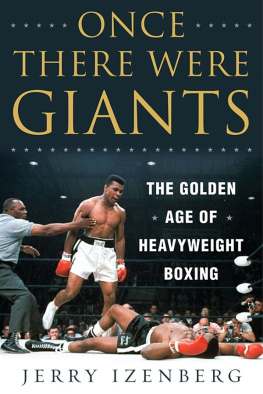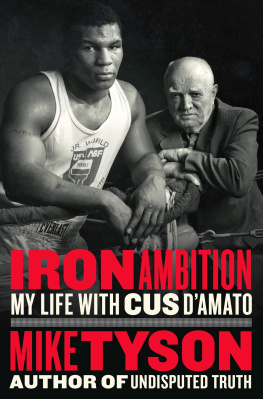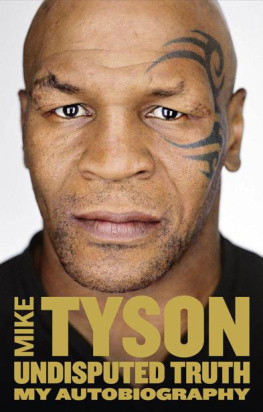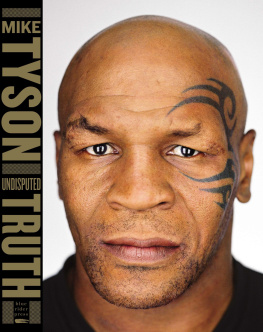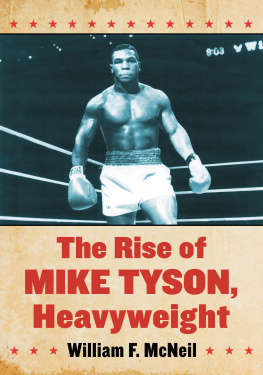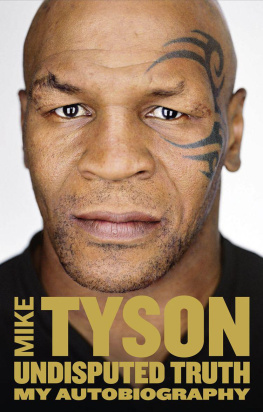TYSON
The Concise Biography of Iron Mike
By Frank Oliver
Copyright 2012 Frank Oliver
All rights reserved
Smashwords Edition
Michael Gerard Tyson was born on 30 th June, 1966, in Brooklyn, NewYork. When he was just an infant Tysons father abandoned hismother and her three children leaving them to grow up in poverty ina small apartment in one of the roughest neighbourhoods in thecity. With few other options available to him, Tyson was drawn intothe life of a gang member and spent his time on the streetscommitting crimes and making himself well known to the localpolice.
Tyson had adifficult time as a small child. He was softly spoken and had alisp which he carried with him into adult life. He was also largefor his age which made him a target for violence and ridicule amongolder gang members. Tyson never fought back and his only friendswere a coop of pigeons he kept on the roof of his apartment block;a hobby he continued even after he became heavyweight champion. Itwas his love of pigeons that led to a defining moment in Tysonslife. An older gang member from the neighbourhood discoveredTysons hobby and killed one of the pigeons in front of him out ofspite. This so enraged the previously timid Tyson that he set uponthe larger boy and beat him into submission. It was the first timeTyson fought back against his tormentors and he discovered twothings; he liked fighting, and he was good at it.
At the age often Tyson was already a career criminal, he had started as a pickpocket but as he grew older the seriousness of his crimes grew withhim. He advanced to mugging and robbery and took pride inoutsmarting his victims by using his soft voice to mislead the oldand vulnerable. His favourite scam was to convince elderly peopleto let him carry their bags home as a good deed. His victimsthinking he was helping out in the community gladly accepted. Whenthey got home they found to their horror that it was a ploy to getinto their home so he could steal from them. By the age of twelveTyson had been arrested by the police countless times and hadadvanced to more serious offences such as carrying a gun. As aresult the authorities eventually sent him to the Tryon School forBoys detention centre.
Tyson continuedto act out at the correctional school. When he assaulted one of theother boys, plus the guards who tried to restrain him, he wascordoned off from the other offenders. It was at this point heencountered Bobby Stewart, a former professional boxer who workedat the school. When Tyson heard about Stewart he made it known thathe wanted to meet him and learn how to box. Seeing an opportunityStewart made a deal with Tyson that if his behaviour and gradesimproved he would teach him some techniques as a reward. Tysonsattitude changed overnight. He became a model student and kept outof trouble as long as he received the boxing lessons he had beenpromised by Stewart. Tyson seemed to have a natural aptitude forboxing which so impressed Stewart that he decided to introduce himto a trainer he knew named Cus DAmato.
DAmato was alegendary trainer who had previously coached Floyd Patterson andJose Torres to world titles. Under DAmatos tutelage Pattersonbecame the youngest heavyweight champion in history at age twentyone. DAmato was in his seventies when Bobby Stewart bought Tysonto see him; but he still managed a small stable of fighters fromhis home in Catskill. When he saw Tyson for the first time hethought it was a hoax on Stewarts part. At the age of thirteenTyson already weighed two hundred pounds and was stronger than mostadult men. After being convinced Tyson really was only thirteenDAmato asked Bobby Stewart to spar with his protg so he couldevaluate his potential. Eager to impress, Tyson advanced on Stewartwith such ferocity that the former pro was forced to throw bigpunches to keep him off. He bloodied Tysons nose in an effort toback him up but Tyson kept advancing regardless of the blows. Aftertwo rounds DAmato declared that he had seen enough but Tysonrefused to stop because he and Bobby Stewart always sparred forthree rounds. After the demonstration was over Cus DAmatoconcluded that if he wanted it, Mike Tyson could be the heavyweightchampion of the world.
It was not longbefore DAmato had Tyson released into his care permanently. Hebought him to live in his house in Catskill where he allowed anumber of young fighters to live and train. Tyson worked in the gymduring the day where he was trained by Teddy Atlas under DAmatosguidance. The rest of the time he spent absorbing DAmatos boxingwisdom or watching old fight tapes until he developed anencyclopaedic knowledge of the sport and the great fighters.DAmato drilled Tyson in the Peek-a-boo style which he haddeveloped and used successfully with Floyd Patterson. The styletaught a boxer to keep his hands tight to his head as protectionand elbows locked at his side to protect his midsection. He wasthen taught to use lateral head and body movement to avoid punches.Tysons sparring partners quickly discovered that he had tremendousnatural punching power, but DAmato wanted to emphasise theimportance of defensive capability and soon made Tyson a master ofthe style.
As Tysondeveloped DAmato entered him in amateur tournaments which Tysondominated with knockout victories. He won the National JuniorOlympics and then defended his title the following year in atournament that included a record eight second victory. Theseconfident and dominant displays belied the true frailty of Tysonsemotions however. He had almost no self confidence and believed hehad no worth beyond his ability as a boxer. He was terrified oflosing and letting down the people who supported him; regardless ofhow successful he had been previously. On occasion he broke down intears before important fights and had to be consoled by TeddyAtlas. His team had to constantly encourage and reassure him togive him the confidence he needed to perform. Later in his lifeTyson admitted that he occasionally had dreams about his upcomingfights in which he would lose to his opponent. Instead of allowingthis fear to consume him, he used it to drive himself harder intraining so he had nothing to fear when he entered the ring.
While he wasfaultless in the ring, not every stage of his development wentsmoothly because his behaviour was still a serious issue. He wasoften in trouble at school, broke rules at home and at times wasdisrespectful to DAmato. This eventually led to a disagreementbetween Atlas and DAmato about how Tyson should be disciplined.Atlas wanted to punish Tyson by banning him from the gym, the onlything that could influence his behaviour. While DAmato may haveunderstood this he didnt want to do anything that would hamperTysons development. Instead of punishing Tyson for his poorbehaviour at school he took him out of school and arranged for apersonal tutor which allowed more time for boxing. DAmato was notin good health and he knew Tyson was his last chance to achieveanother title; perhaps because he felt he had limited time he letTyson get away with more than he normally would. Atlas warnedDAmato that Tysons behaviour out of the ring would eventuallylead to serious trouble, he couldnt have known at the time howaccurate his prediction would prove to be. Eventually thedisagreements between DAmato and Atlas reached a climax and Atlasstepped down in protest leaving Tyson without a trainer.Fortunately DAmato had been developing another fighter named KevinRooney who also lived with him and knew his methods intimately. Hisprofessional career had hit a rocky patch and the timing wasperfect for him to transition from fighter to trainer and pick upthe mantle left by Atlas.
When Tysonturned sixteen he became eligible for the senior amateurcompetitions. His reputation grew as he accumulated victories,mainly because of the ferocity with which he achieved them. Heintimidated the other fighters by refusing to interact with them inthe locker room before the fight. This along with rumours that hewas Joe Fraziers son (the first man to defeat Muhammad Ali)contributed to his aura of invincibility. (Ironically Tyson didactually fight and defeat Joe Fraziers son many years later as aprofessional). Before he reached that point however he won a numberof national events with punching power so brutal that otherfighters deliberately tried to avoid fighting him. Many boxersthrew fights in early rounds so they didnt have to fight Tyson,others mysteriously developed injuries before they were scheduledto meet him, and at one tournament so many of his opponentswithdrew that his first actual fight was the semi final. Despitehis success his style was not suited to amateur boxing. ThePeek-a-boo style was not favoured by the judges and Tyson often hadto rely on knockouts to win fights. In amateur boxing points areawarded for punches landed regardless of quality or power,aggression also holds no value unlike in the professional ranks.DAmato knew this and had always trained Tyson with an eventualprofessional career in mind.
Next page
